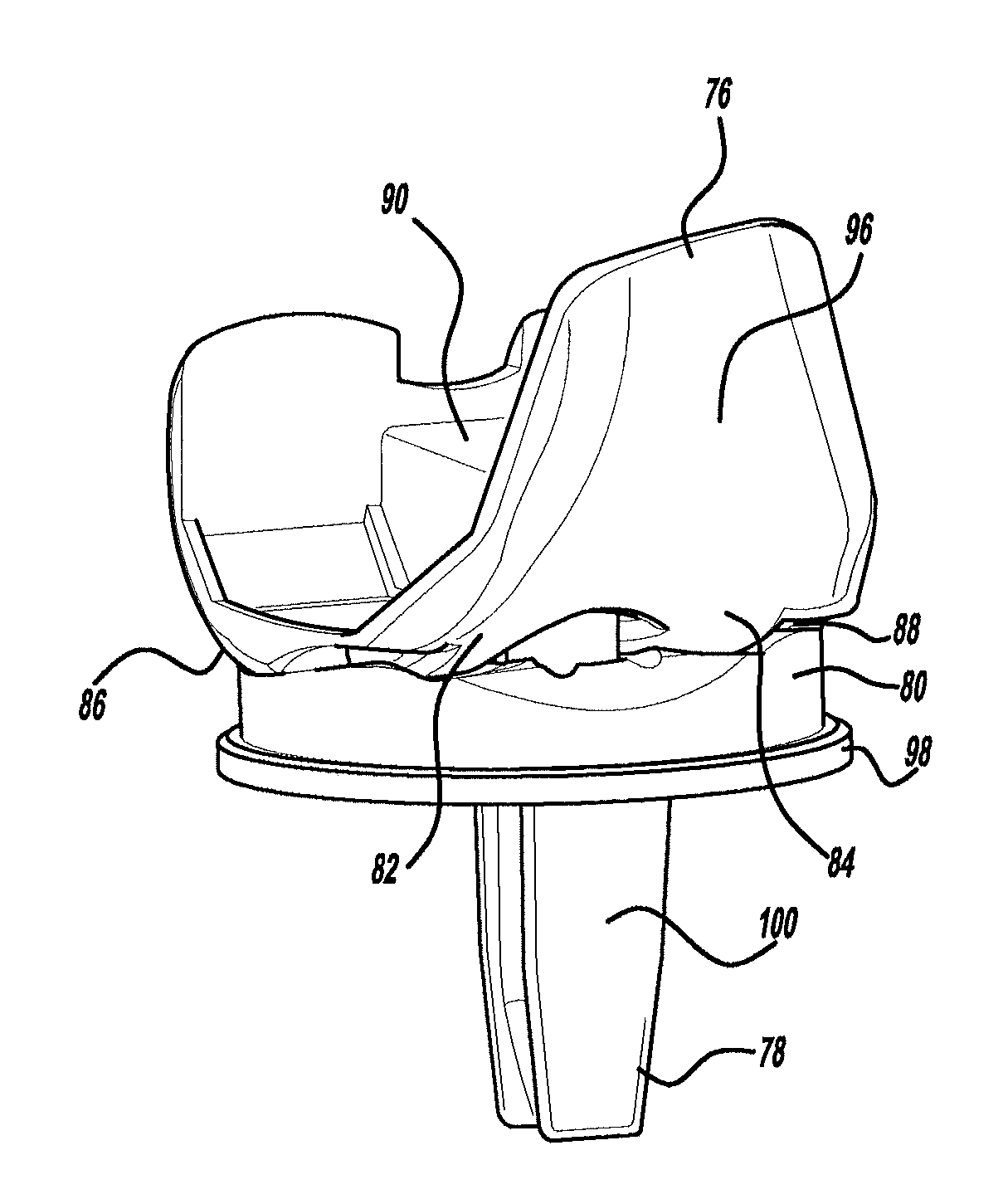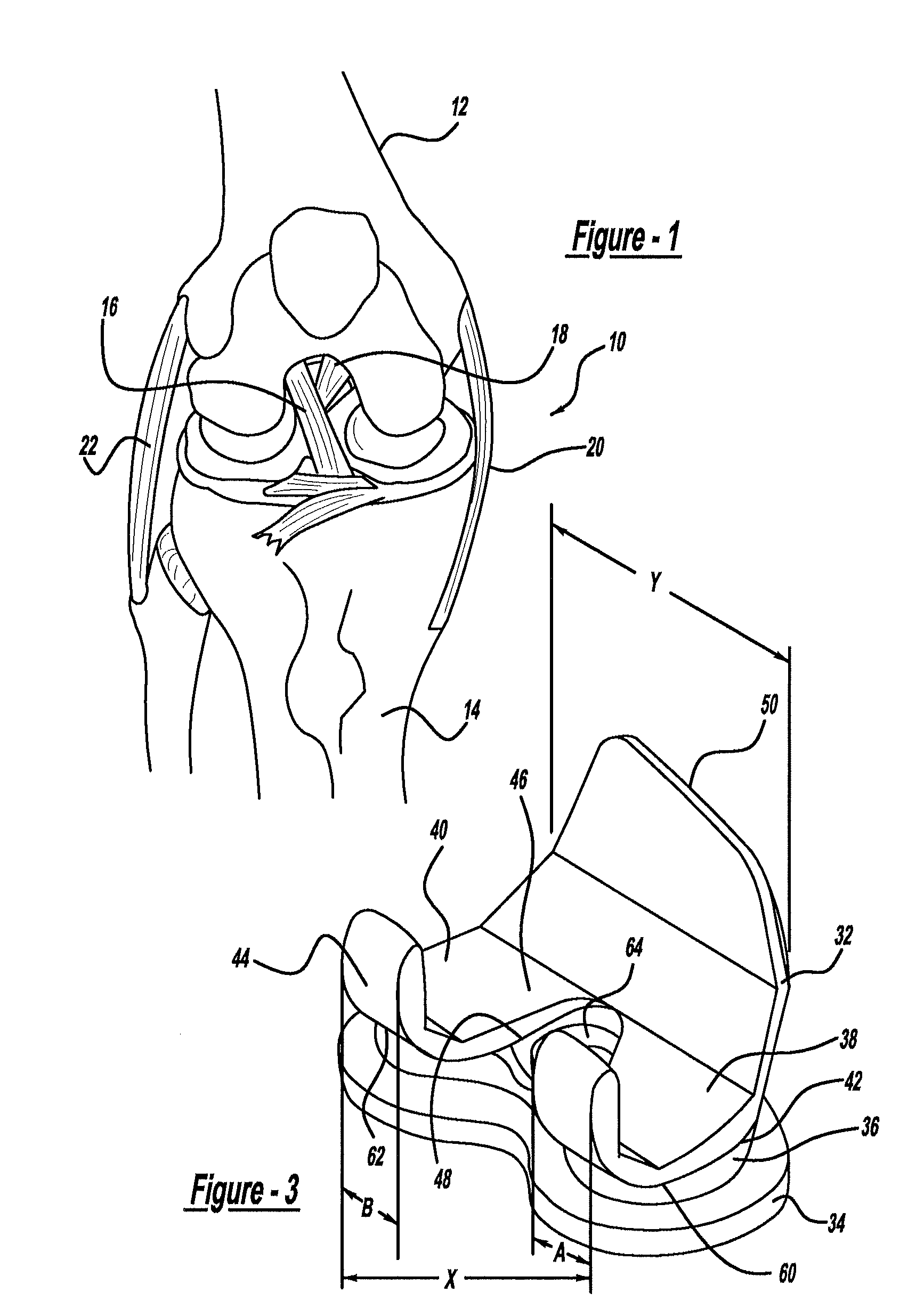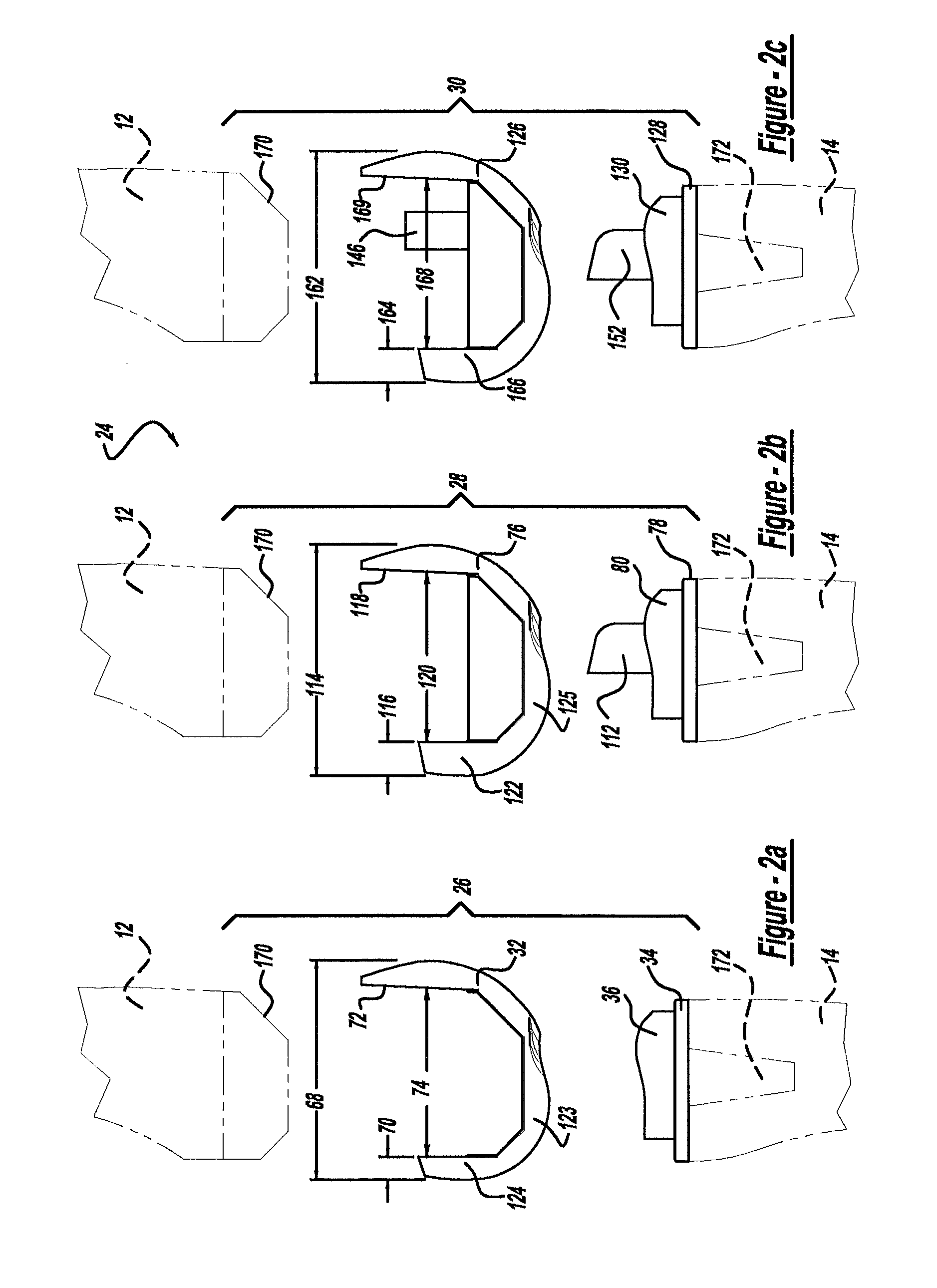Elongated femoral component
a femoral component and flexion gap technology, applied in the field of knee joint prosthesis, can solve the problems of increased flexion gap relative to flexion gap, and increased surgical resection,
- Summary
- Abstract
- Description
- Claims
- Application Information
AI Technical Summary
Benefits of technology
Problems solved by technology
Method used
Image
Examples
Embodiment Construction
[0041]The following description of the embodiment(s) directed to providing an elongated femoral component for the posterior stabilized and the fully constrained knee joint prosthesis are merely exemplary in nature and are not intended to limit its application or uses. The present invention is described in detail below with respect to floating bearing type knee joint prostheses. However, those skilled in the art will appreciate that the present invention is clearly not limited to only knee joint prostheses that employ floating bearings, but may be employed with any other type of knee joint prosthesis, such as a fixed bearing knee joint prosthesis.
[0042]Referring to FIG. 1, an anatomical knee joint 10 which provides articulating motion between a femur 12 and a tibia 14 is illustrated in detail. The anatomical knee joint 10 includes a posterior cruciate ligament (PCL) 16 and an anterior cruciate ligament (ACL) 18, which cross each other within the knee joint 10. The PCL and ACL ligamen...
PUM
 Login to View More
Login to View More Abstract
Description
Claims
Application Information
 Login to View More
Login to View More - R&D
- Intellectual Property
- Life Sciences
- Materials
- Tech Scout
- Unparalleled Data Quality
- Higher Quality Content
- 60% Fewer Hallucinations
Browse by: Latest US Patents, China's latest patents, Technical Efficacy Thesaurus, Application Domain, Technology Topic, Popular Technical Reports.
© 2025 PatSnap. All rights reserved.Legal|Privacy policy|Modern Slavery Act Transparency Statement|Sitemap|About US| Contact US: help@patsnap.com



